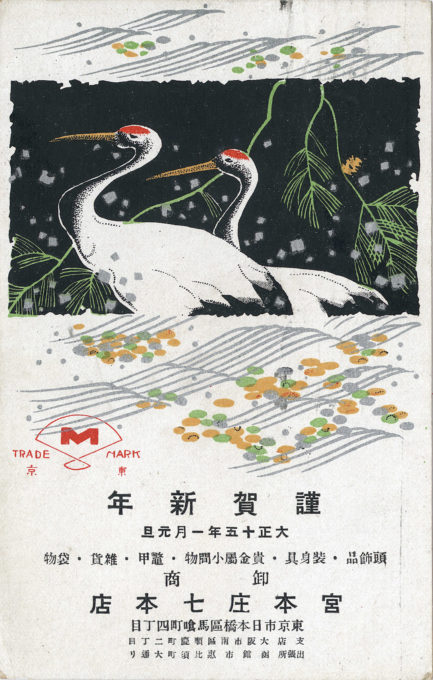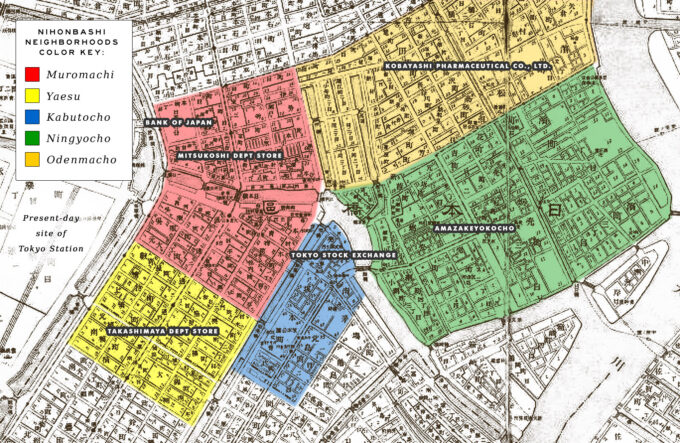
New Year’s advertising postcard, Kanbonjo Wholesale Co. (7th Branch), Nihonbashi, Tokyo, 1926, with branches in Osaka and Hakodate. The Japanese regard the tsuru (crane) as auspicious, mystical creatures often referred to as “birds of happiness” or “birds of peace” and a powerful symbol of longevity, good fortune, and happiness. This intrepid wholesaler dealt in head wear, shoulder wear, precious metal items, tortoiseshell work, and sundries from a warehouse located in what was until the 1923 earthquake, Tokyo’s primary wholesale and warehouse district, and the city’s fish market.
See also:
Nihonbashi District, 1905-1930.
Uogashi (Fish Market) at Nihonbashi, c. 1910.
Shirokiya Department Store advertising postcard, Nihonbashi, Tokyo, c. 1930.
“Kanbon Wholesale Co. in Nihonbashi, Tokyo has a history tied to the bustling commercial legacy of Nihonbashi, which has long been Tokyo’s center for business and trade.
“While specific records for the company are not be widely documented in English sources, Nihonbashi has been a significant commercial district since the Edo period (1603–1868), famous for its wholesale businesses, ranging from textiles to seafood and various other goods. Many wholesale companies in the area were family-owned businesses passed down through generations, contributing to a vibrant network of trade that connected the capital with suppliers and merchants across Japan.
Map: The five main neigborhoods of Nihonbashi, Tokyo, c. 1910, with each represented by a major financial institution or major retail business. The western half of the district was and is primarily populated with financial and high-end retail establishments. The eastern half has historically been more populated with smaller merchants and artisans. Japan’s oldest toothpick shop, Nihonbashi Saruya, founded in 1704, is still located in Odenmacho, Edo’s former commercial center. Its neighbor to the south, Ningyocho, also known as “Doll Town” for its ningyo joruri (puppet theater) history, is still home to Tamahide, the legendary restaurant credited with inventing oyako donburi (chicken-egg rice bowl) in the mid-17th century.
“Nihonbashi’s wholesale district was especially active in providing goods and foodstuffs for the nearby markets (and the Shogun and, later, the Emperor). As Japan industrialized, wholesale companies like Kanbon grew to play an important role in meeting the increased demand and trade for both imported and locally produced goods. The area thrived as a hub for merchants who specialized in wholesale distribution, selling products to retailers and other businesses rather than directly to consumers.
“After being leveled in the 1923 Great Kanto Earthquake, the Nihonbashi district recovered. The warehouses and fish market were relocated and, given the presence already of banking institutions such as the Bank of Japan and Mitsui Bank, and the existing plethora of high-end retailers, city planners fully embraced the idea of completing the transformation of Nihonbashi into the city’s — and the nation’s — financial nerve center and marquee shopping district.”
– Wikipedia


